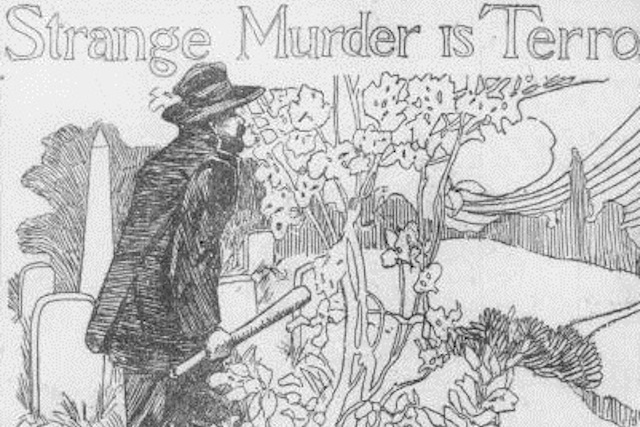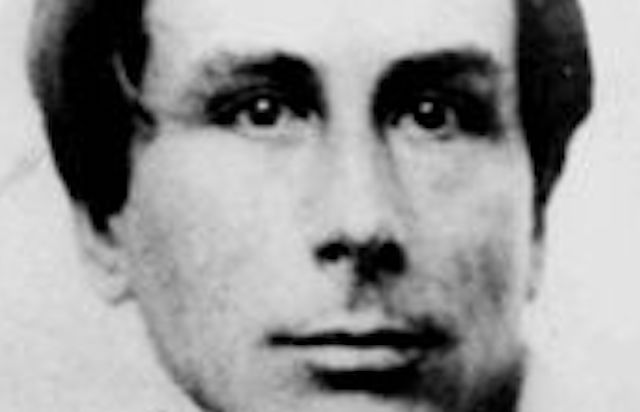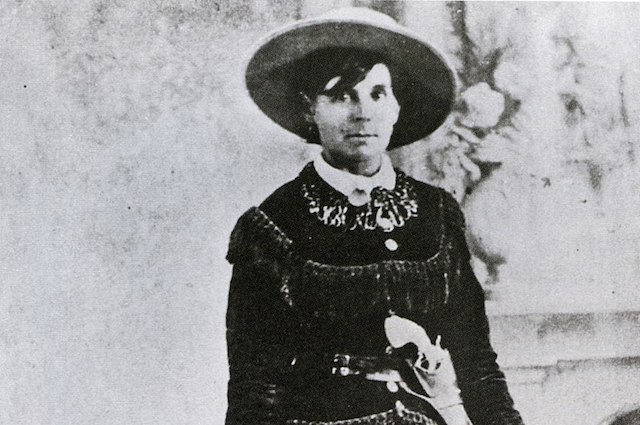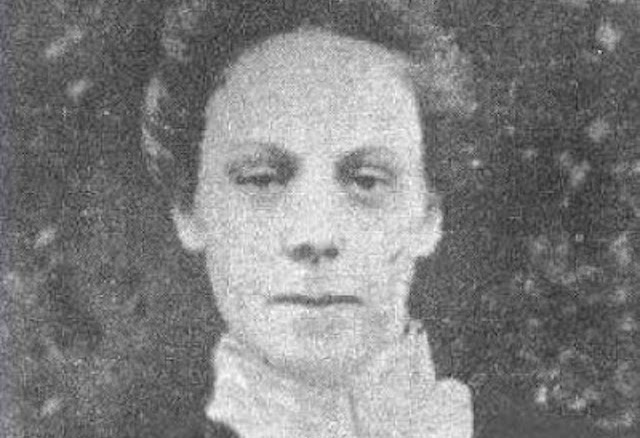Will we ever run out of gruesome, unsolved murders to explore? Probably, but not anytime soon. For the time being, we are going to be looking at 10 more chilling killings from the past where the culprit or culprits got away scot-free.
10. The Cumminsville Murders

Not every unsolved killing spree from the past attains the level of infamy of that of Jack the Ripper or the Zodiac. In fact, some of them are condemned to obscurity, decades or even just years after they had taken place.
Take, for instance, the Cumminsville Murders of the early 20th century from Cincinnati, Ohio. Between 1904 and 1910, an unidentified man attacked young women in the Cumminsville area with a ferocity and cruelty easily comparable to that of Jack the Ripper. Some women had their throats cut, others their skulls bashed in, and one even had her entire head mangled with a hatchet.
Five women were killed this way, three of them in 1904. The murderer also attacked at least a dozen other women that same year, but they all managed to survive their assaults, most of them because they traveled together in groups. After that string of failures, the killer laid dormant for years, and it wasn’t until 1910 that he started killing again. He claimed two more victims, and then again stopped his murder spree for unknown reasons.
The police had multiple suspects and even made a few arrests, but nobody was ever convicted.
9. The Mount Stewart Murder
Back in 2010, an amateur genealogist named Chris Paton decided to look through his family history and made a startling discovery – over 150 years ago, his great-great-great-grandmother Janet Rogers had been bludgeoned to death with an axe and her killer had never been identified.
The Mount Stewart Murder, as it came to be known, occurred in March 1866, at a farm near Perth, Scotland. It was owned by the victim’s brother, William Henderson, and Janet Rogers went to stay there for a while to help her brother run the farm while he searched for a new domestic servant. Three days later, she was found dead on the kitchen floor, having been struck repeatedly with an axe.
The police had two main suspects – Henderson himself, and his ploughman, a man named James Crichton. However, they didn’t really have a solid case against either one, and even a £100 reward, which was a large sum for the time, could not persuade anyone to come forward with any incriminating evidence. In the end, Crichton was the one charged with the murder, but the jury took only 12 minutes to reach their verdict – “not proven,” meaning that the prosecution was unable to definitively establish guilt.
8. The Babes in the Woods

On January 14, 1953, an employee for the Stanley Park in Vancouver, British Columbia, was walking through his beat when he stepped on a bunch of leaves that made a strange, crunching sound. He looked beneath them and found the sleeve of a decomposing fur coat. He dug through the leaves and branches and found numerous bones sticking out of the earth. He called the authorities and, soon enough, their worst fears were confirmed – the bones were human. Not only that, but they belonged to two children.
Investigators of the time didn’t know this, of course, but they were about to embark on Vancouver’s longest-running unsolved murder case. It became known as the “Babes in the Woods” Murder, one of several cases around the world to share this name.
To this day, we still have not identified the victims or their killer, and part of this was the result of an inefficient investigation. The doctor who examined the remains was not a forensic pathologist and, although he correctly surmised that the children had been in the woods for approximately six years, he also stated that the bones came from a boy and a girl. This defined the police investigation of that time and it wasn’t until 1998 that a modern DNA test showed that both victims were, in fact, male.
Even if catching the killer is no longer possible, Vancouver authorities are still hopeful that, one day soon, they will at least be able to identify the two boys. In 2018, they put their DNA samples into ancestry databases in the hopes that they might track down their living relatives.
7. The Lake Bodom Murders

Back in 1960, four Finnish teenagers thought it would be fun to go camping. They chose Lake Bodom, near the city of Espoo. They were two 15-year-old girls, Maila Björklund and Anja Mäki, and their 18-year-old boyfriends, Seppo Boisman and Nils Gustafsson. They left on June 4 and camped overnight, but only Gustafsson would make it back alive.
Somebody attacked the teenagers in their tent during the hours before dawn. Boisman and the two girls were all stabbed and bludgeoned to death, while Gustafsson was found beaten, barefoot, and unconscious, but alive.
There were a few suspects over the decades. One was an unnamed man who operated a kiosk in the vicinity. Allegedly, he killed himself in 1972, leaving behind a note confessing to the deed, but police investigated his claim and verified that he had an alibi. Another candidate was a German immigrant named Hans Assmann, who had been put forward as a suspect in another of Finland’s notorious unsolved murders, that of 17-year-old Kyllikki Saari.
The most dramatic turn in the case occurred in 2004 when Nils Gustafsson was formally arrested and charged with the murders. This seemingly confirmed a belief held by many, that the only surviving victim had been, in fact, the assailant. However, Gustafsson was found “not guilty” on all charges, and the case remains open to this day.
6. The Murder at Montrouge

The people of Paris woke up to a gruesome discovery one cold November morning in 1886. The torso of a young woman was left in front of a church called Saint-Pierre de Montrouge, wrapped in cloth and paper. Her head, legs, and right arm had been cut off, and her uterus and right breast had been removed. The legs were later found in another paper parcel, while the head and right arm were never recovered.
With so little to go on, French police were unable to identify the victim or her killer. Information on this crime is very scarce today, and would have likely faded into complete obscurity if not for the time it took place. This was in late 1886, just one year before Jack the Ripper began his killing spree in London. Given the viciousness of the crime and the similar modus operandi, it is not surprising that investigators believed a connection might exist between the two or to the several other torso murders that occurred in London around that same time. However, no definitive connection was ever established.
5. The Death of Preacher Smith

Henry Weston Smith was born in 1827 in Ellington, Connecticut. He served as a soldier and a doctor during the Civil War, but afterwards he found his true calling – preaching. He wanted to spread the word of God to the remote parts of the country so, during the 1870s, he traveled to the Black Hills of South Dakota during the gold rush. He preached to the mining camps and, eventually, settled on the notorious settlement of Deadwood.
By 1876, Preacher Smith, as he was known, became a common presence in town. He might be familiar to those of you who watched the Deadwood HBO show as he was a character in it, played by Ray McKinnon. However, while his TV character slowly faded away due to a brain tumor, the end of the real-life Preacher Smith was far more sudden and violent.
On August 20, 1876, Smith left Deadwood, leaving behind a note on his cabin door that said “Gone to Crook City to preach, and if God is willing, will be back at three o’clock.” He was killed on route and never made it back. He was shot in the heart and left by the side of the road.
According to a letter written by Sheriff Seth Bullock, Preacher Smith’s death was widely attributed to Indians. Some believed he could have been killed by thieves, but nothing was stolen. There is a third hypothesis which claims that Smith was murdered by some of Deadwood’s more disreputable proprietors because he was bad for business – more people becoming part of Preacher Smith’s congregation meant fewer people spending money at their brothels, saloons, and gambling halls.
4. Belle Starr

We’re staying in the Old West for the time being to take a look at the violent and mysterious death of Belle Starr, one of the few female outlaws who achieved the same kind of notoriety as her male counterparts, becoming known as the “Bandit Queen.”
Starr mingled with many other Wild West icons. A Missouri native, she associated with other criminals from the state, most notably Jesse James and his gang. She once married Jim Reed, an outlaw and member of Quantrill’s Raiders and, at one point, she was arrested for horse theft by Bass Reeves, one of the most famous lawmen of the time.
Even so, Belle Starr was barely known in her lifetime outside of the frontier states. It was, in fact, her bloody murder that catapulted her to national fame as she made the headlines across the country and later became a character in many dime novels.
It happened on February 3, 1889, as Belle was returning from Fort Smith, Arkansas, to her homestead in Oklahoma. She was ambushed on the road and gunned down with a shotgun blast to the back. Her killer then approached and shot her again to make sure Starr was dead.
A man named Edgar Watson was often mentioned as the chief suspect, as he lived near the crime scene. He also bore a grudge against Belle, but this wasn’t saying much as she had a lot of enemies. Even her own children, Eddie and Pearl, were considered suspects at one point because they’ve had a falling out with their mother. Watson was arrested, but acquitted due to lack of evidence, and nobody else was ever charged with the murder of the Bandit Queen.
3. The Peasenhall Mystery

Peasenhall might be a tiny, quiet village in the English county of Suffolk, but a hundred years ago, it was home to one of the country’s most notorious murders. On the night of May 31, 1902, a servant girl named Rose Harsent was found dead by her father, with her throat slashed from ear to ear and multiple cuts and stab wounds on her body. Her clothes were also burned, suggesting that perhaps her killer tried to get rid of any incriminating evidence.
During a medical examination, a possible motive for Rose’s murder quickly emerged – she was unmarried, but she was six months pregnant. Could the father of her child have been the murderer, perhaps so that he could conceal the affair? That’s what police thought, and they quickly arrested the local preacher, William Gardiner, as the gossip around town was that the two of them had been lovers for quite a while, despite him being married with six children.
Gardiner was tried twice but, on both occasions, the jury failed to reach a verdict. Before a third trial could start, the prosecutor entered a request of nolle prosequi, meaning that he was ending the prosecution on the case, most likely because there was still insufficient evidence to convict. Gardiner walked away a free man without actually being acquitted of the murder.
In the decades that followed, he was still considered the main suspect by some people, but others thought that, perhaps, his wife was the real culprit, killing her husband’s mistress in a fit of jealousy. And others believe that Gardiner was never actually the father, and that somebody else was responsible for the pregnancy and the murder.
2. The Meath Murder Mystery

Now we take a trip 150 years in the past, in a town called Carrickmacross in County Monaghan, Ireland. On October 7, 1869, 15-year-old Nicholas Ledwithe went to the market with his neighbor, Margaret McCormack. On their way back, they noticed a parcel left in the road. Nicholas went to inspect it and, to his delight, found that it contained a bag of flour, some currants, and a packet of biscuits. He took it home where his sister, Mary, used the ingredients to make a potato cake.
The following morning, Nicholas, his brother Andrew, and their father James, all enjoyed a hearty breakfast. Mary ate only a bit, as did a neighbor girl who happened to be visiting. Less than an hour later, everybody fell ill and, while Mary and the girl recovered, all the men died. They had been poisoned and authorities immediately suspected that it was intentional, and that the parcel was left in the road for Nicholas to find.
Their belief was reinforced a few months later when the neighbor, Margaret McCormack, was murdered in her home. Her death was far less ambiguous as someone smashed her skull with a weight and then pulled down the roof in her bedroom on top of her body.
As investigators discovered, McCormack and the Ledwithe family were feuding with another family in the district. The latter became obvious suspects and, even though police made several arrests, there were never any convictions in either case.
1. Jack the Stripper
No, that is not a typo, we are not talking about the infamous Ripper who prowled Whitechapel in the late 19th century, but another killer who was active in London during the 1960s. He also targeted prostitutes, and had a habit of undressing them after strangling them, so the media gave him the moniker “Jack the Stripper.”
He killed at least six women and dumped their bodies around the River Thames. There was a witness for one of the crimes and, although they were able to give descriptions of the culprit and his car, Jack the Stripper was never identified.
That being said, there have been several solid suspects. The lead investigator on the case strongly suspected a security guard named Mungo Ireland. He committed suicide before being formally charged, and the killings stopped after his death. However, some research seemed to suggest that Ireland was in Scotland when one of the murders occurred, which would likely leave him out of contention for the entire killing spree.